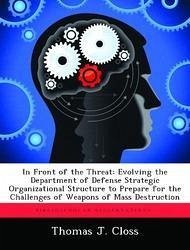The increasing likelihood and potentially devastating effects of weapons of mass destruction (WMD) use against the United States has forced a reexamination of America's national security posture here at home. Fortunately, much has been done recently to define and address the threat. Many federal agencies, including the Department of Defense (DoD), now contribute steadily increasing amounts of manpower, resources, and expertise to the cause. This thesis asks: Is DoD adequately organized at the strategic level to address this evolving WMD threat? Has its strategic organizational structure kept pace with the threat and the recent actions taken to address it? The study finds that it clearly has not. There is an identifiable lack of strategic integration of effort in this area. This thesis examines the relevant literature and capabilities then suggests that, while much has been done at the tactical and operational levels, very little centralized strategic direction exists. Two potential solutions are proposed: (1) The creation of a Commander in Chief (CINC) Homeland Security within which WMD strategic direction and integration resides; and (2) An expanded Joint Task Force for Civil Support (JTF-CS) capable of the full range of strategic level tasks required to address the threat.
Hinweis: Dieser Artikel kann nur an eine deutsche Lieferadresse ausgeliefert werden.
Hinweis: Dieser Artikel kann nur an eine deutsche Lieferadresse ausgeliefert werden.








